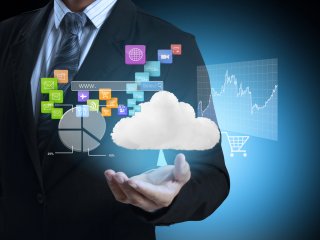Posted June 9th, 2015
By Kris Powers
What is Trending, Fading and on the Horizon for Campus Technology?
At universities across the globe, technology marches on. According to an article written by Matt Zalaznick earlier this year and published in University Business, here is an overview of what is trending in campus technology:
Trending
- Alternative reality games in the classroom: Using the real world as a platform and delivering a story that may be altered by players' ideas or actions.
- AppleTV for wireless projection in the classroom.
- Apps that forecast GPAs, or that locate specific snacks in specific vending machines, as well as provide interactive maps of your campus.
- Artificial intelligence, both in digital learning software and research.
- Personalized learning: Educational programs, experiences and instruction intended to address the distinct learning needs, interests, or cultural backgrounds of individual students.
Fading
- Computer labs: Labs are becoming obsolete as students bring powerful laptops and tablets to campus.
- Paper: Storing and managing information becomes IT’s responsibility as departments increasingly go paperless.
- On-campus data storage: Thanks to the cloud, campuses are exploring other, more cost-effective, storage options.
What’s on the Horizon?
The 2015 Technology Outlook report, from Open Universities Australia and the not-for-profit New Media Consortium, says that big data, augmented reality, wearable devices and cloud-based apps are among the revolutionary developments that universities are expected to adopt. Here’s their projected timeline:
A year away or less
- Bring your own device (BYOD): Already implemented at some universities, BYOD allows students to work with technology they are already familiar with.
- Cloud computing: Much cheaper and more flexible for universities than using traditional data centres. With cloud computing, multiple users can access a single server to retrieve and update their data.
- Flipped classroom: Students learn the key material outside of the classroom through online lectures, videos, online discussions, podcasts, and e-books. Class time is spent in discussion, working together, delving deeper into topics and putting learning into practice.
- Learning analytics: Using "big data" techniques to analyse students' progress in learning, to identify those who are struggling and improve the course for future students. Nicole Engelbert, Director of Industries Research and Analysis for Ovum IT states that learning analytics can provide a time “where we finally exploit technology for the betterment of teaching and learning, as opposed to just using technology to recreate what happens in a traditional class.”
- Continual refinement of online learning: Higher education should see a wave of online learning advancements, including more rigorous curriculum development, and expanded use of social networking and collaborative tools.
Two to three years away
- Mobile learning: Using mobile devices with education apps allows teaching and learning to extend to spaces beyond the traditional classroom. Students can learn anywhere, anytime.
- Wearable technology: New devices such as the iWatch and virtual reality goggles are expected to be incorporated into online learning technologies.
- Open licensing: Increased use of open licensing so that learning materials are easily shared and more accessible. Open programs provide a simple, cost-effective way to acquire the latest information and technology.
- Badges: Recognizing smaller units of learning with "badges" that certify a student's achievement.
Four to five years away
- Adaptive learning: Online learning platforms which continually respond and adapt to the unique needs of each learner.
- Augmented reality: Computer-generated sensory input such as sound, video, and graphics are blended with real world environment in an easy to comprehend format for students.
- Quantified self: The movement to amass large quantities of information about one's everyday life is likely to be adapted to education.
- Telepresence: Refers to a set of technologies which allow a person to feel as if they were present, to give the appearance of being present. Teleconferencing offering the illusion that remote users are present, allows body language to be seen and interpreted.
What does that mean for universities? It means that they must boost the power of their networks.
“We are finding internet connections being placed into many, many different things,” says Theresa Rowe, CIO at Oakland University in Michigan and leader of Educause’s CIO Constituent Group. “If everything a student carries comes with something that expects to connect, that means our network has to grow.”
Sources:
http://www.universitybusiness.com/article/outlook-technology-tech-renaissance

